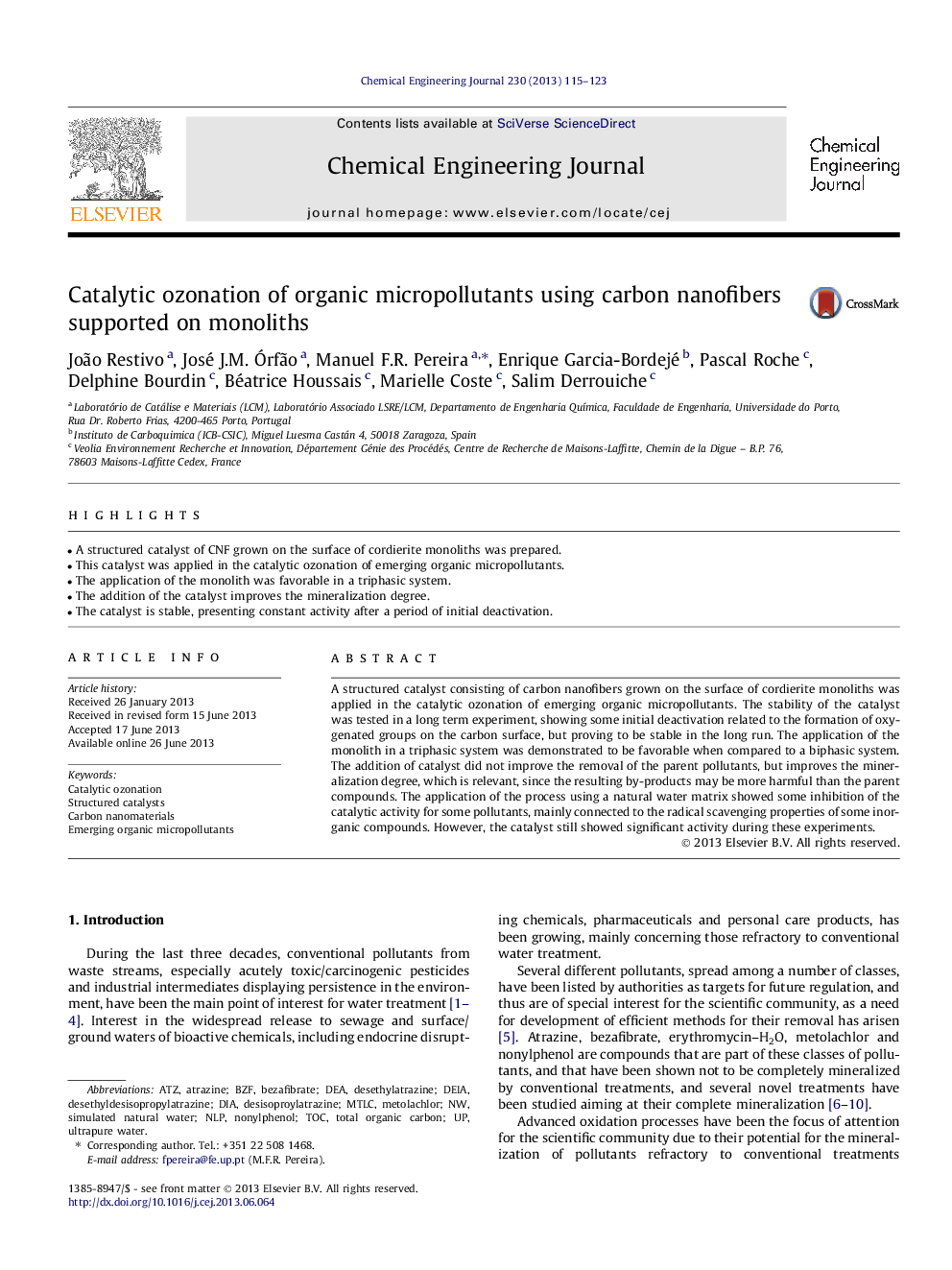| Article ID | Journal | Published Year | Pages | File Type |
|---|---|---|---|---|
| 148369 | Chemical Engineering Journal | 2013 | 9 Pages |
•A structured catalyst of CNF grown on the surface of cordierite monoliths was prepared.•This catalyst was applied in the catalytic ozonation of emerging organic micropollutants.•The application of the monolith was favorable in a triphasic system.•The addition of the catalyst improves the mineralization degree.•The catalyst is stable, presenting constant activity after a period of initial deactivation.
A structured catalyst consisting of carbon nanofibers grown on the surface of cordierite monoliths was applied in the catalytic ozonation of emerging organic micropollutants. The stability of the catalyst was tested in a long term experiment, showing some initial deactivation related to the formation of oxygenated groups on the carbon surface, but proving to be stable in the long run. The application of the monolith in a triphasic system was demonstrated to be favorable when compared to a biphasic system. The addition of catalyst did not improve the removal of the parent pollutants, but improves the mineralization degree, which is relevant, since the resulting by-products may be more harmful than the parent compounds. The application of the process using a natural water matrix showed some inhibition of the catalytic activity for some pollutants, mainly connected to the radical scavenging properties of some inorganic compounds. However, the catalyst still showed significant activity during these experiments.
